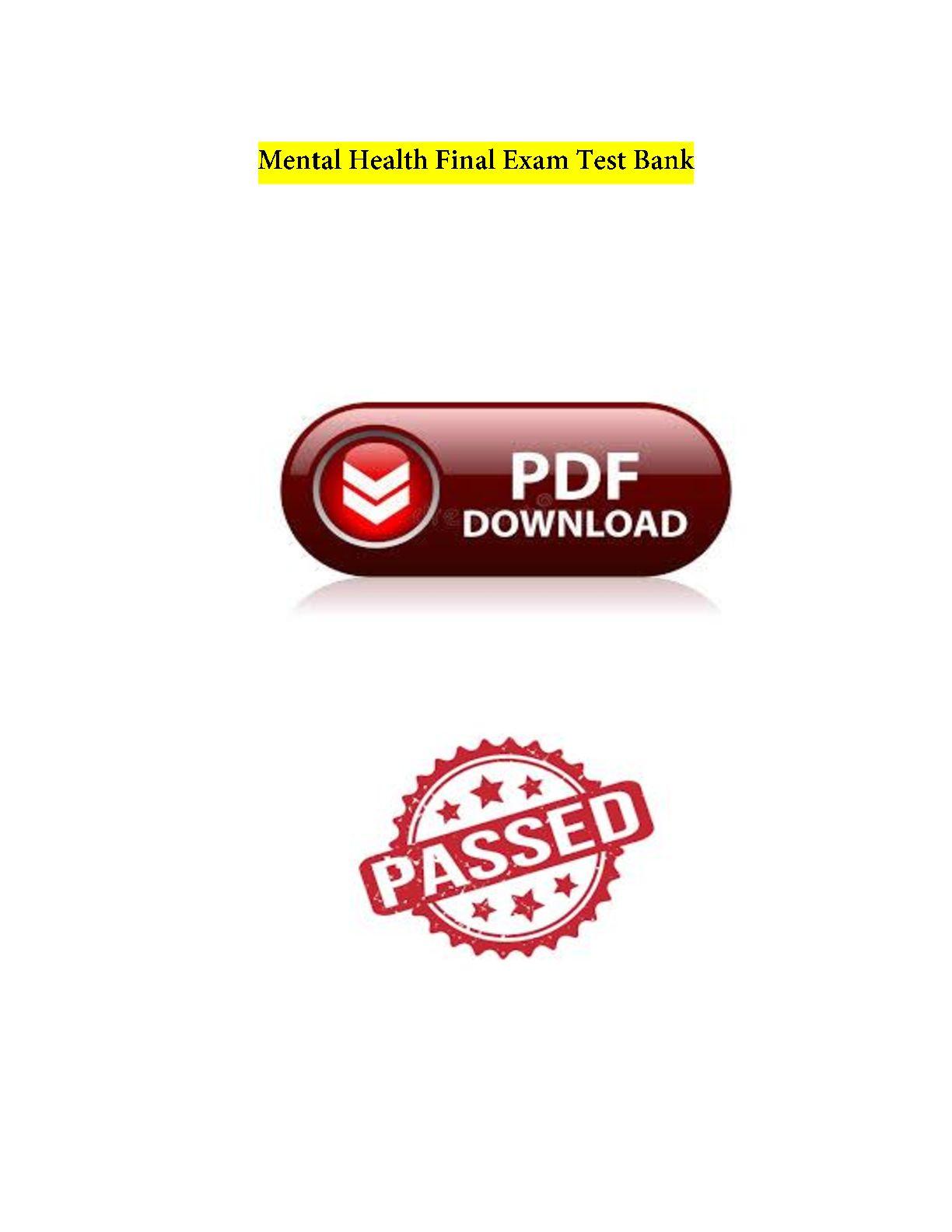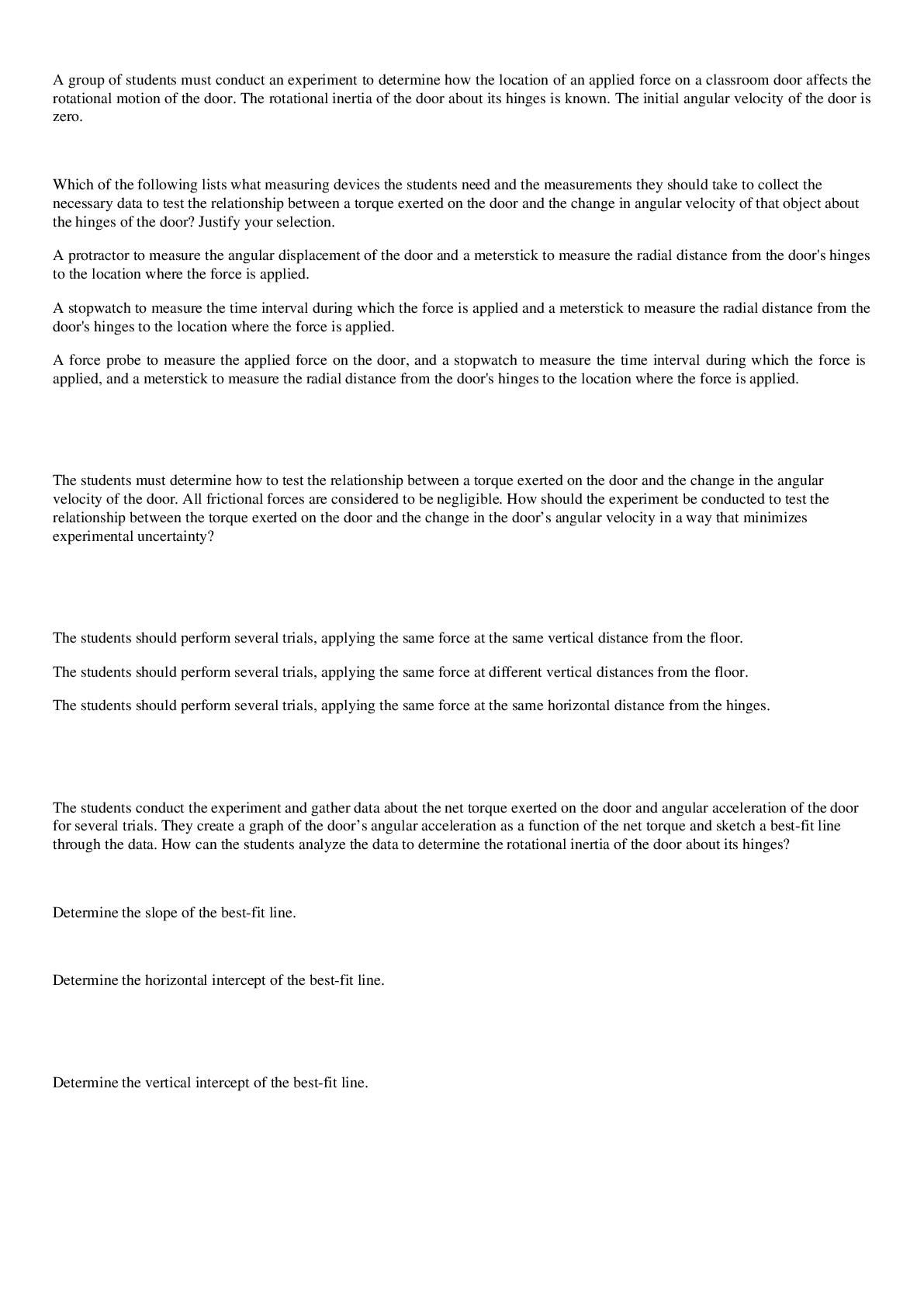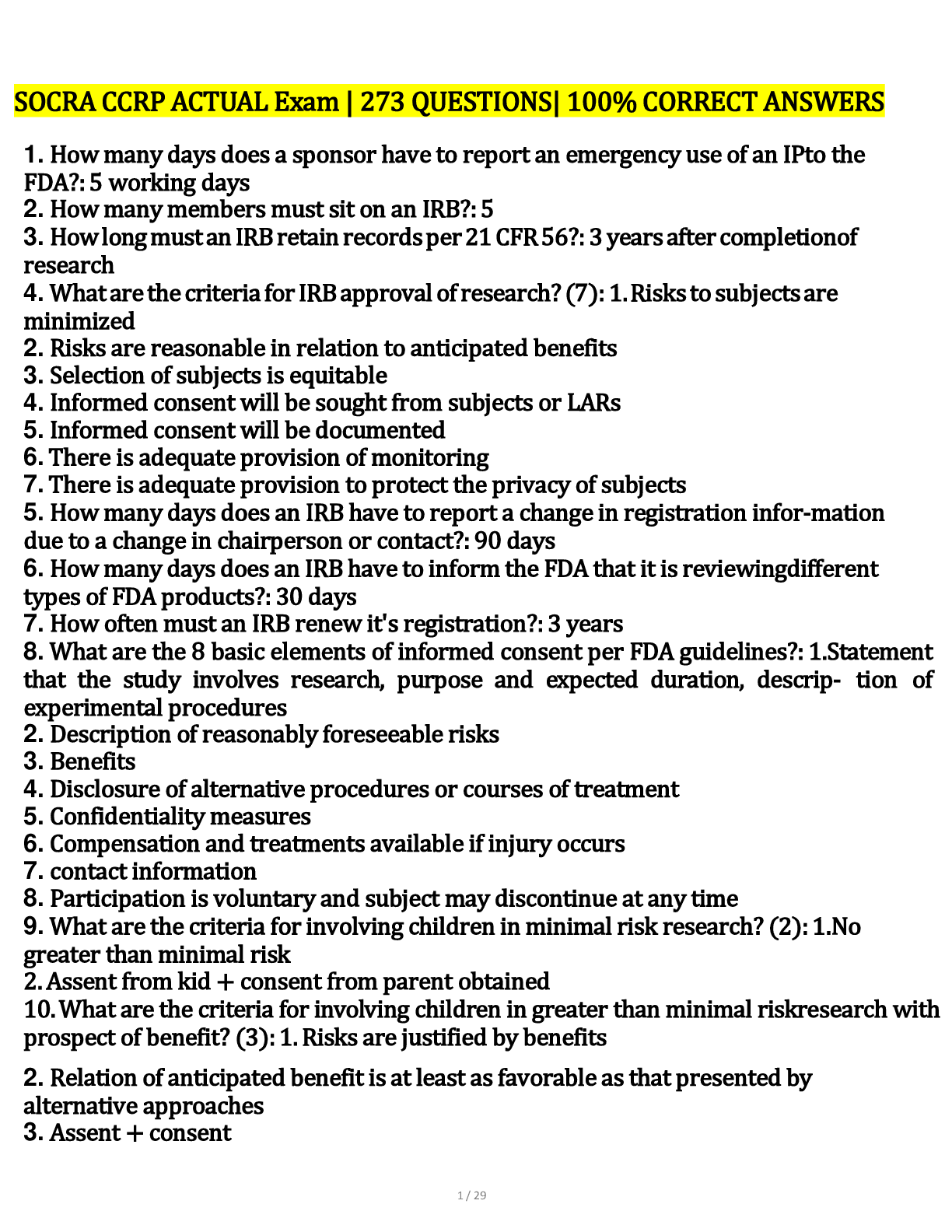NCLEX-SELECT ALL THAT APPLY-QUESTIONS AND ANSWERS
Document Content and Description Below
NCLEX-SELECT ALL THAT APPLY-QUESTIONS AND ANSWERSNCLEX-SELECT ALL THAT APPLY-QUESTIONS AND ANSWERS 1. A patient is admitted to the same day surgery unit for liver biopsy. Which of the following labora... tory tests assesses coagulation? Select all that apply. 1. Partial thromboplastin time. 2. Prothrombin time. 3. Platelet count. 4. Hemoglobin 5. Complete Blood Count 6. White Blood Cell Count Answer: 1, 2, and 3 Prothrombin time, partial thromboplastin time, and platelet count are all included in coagulation studies. The hemoglobin level, though important information prior to an invasive procedure like liver biopsy, does not assess coagulation. 2. A patient is admitted to the hospital with suspected polycythemia vera. Which of the following symptoms is consistent with the diagnosis? Select all that apply. 1. Weight loss. 2. Increased clotting time. 3. Hypertension. 4. Headaches. Answer: 2, 3, and 4 Polycythemia vera is a condition in which the bone marrow produces too many red blood cells. This causes an increase in hematocrit and viscosity of the blood. Patients can experience headaches, dizziness, and visual disturbances. Cardiovascular effects include increased blood pressure and delayed clotting time. Weight loss is not a manifestation of polycythemia vera. Page 1 3. The nurse is teaching the client how to use a metered dose inhaler (MDI) to administer a Corticosteroid drug. Which of the following client actions indicates that he is using the MDI correctly? Select all that apply. 1. The inhaler is held upright. 2. Head is tilted down while inhaling the medication 3. Client waits 5 minutes between puffs. 4. Mouth is rinsed with water following administration 5. Client lies supine for 15 minutes following administration. Answer: 1 and 4. 4. The nurse is teaching a client with polycythemia vera about potential complications from this disease. Which manifestations would the nurse include in the client’s teaching plan? Select all that apply. 1. Hearing loss 2. Visual disturbance 3. Headache 4. Orthopnea 5. Gout 6. Weight loss Answers: 2, 3, 4 and 5. Polycythemia vera, a condition in which too many RBCs are produced in the blood serum, can lead to an increase in the hematocrit and hypervolemia, hyperviscosity, and hypertension. Subsequently, the client can experience dizziness, tinnitus, visual disturbances, headaches, or a feeling of fullness in the head. The client may also experience cardiovascular symptoms such as heart failure (shortness of breath and orthopnea) and increased clotting time or symptoms of an increased uric acid level such as painful swollen joints (usually the big toe). Hearing loss and weight loss are not manifestations associated with polycythemia vera. Page 2 5. Which of the following would be priority assessment data to gather from a client who has been diagnosed with pneumonia? Select all that apply. 1. Auscultation of breath sounds 2. Auscultation of bowel sounds 3. Presence of chest pain. 4. Presence of peripheral edema 5. Color of nail beds Answer: 1, 3, 5. A respiratory assessment, which includes auscultation of breath sounds and assessing the color of the nail beds, is a priority for clients with pneumonia. Assessing for the presence of chest pain is also an important respiratory assessment as chest pain can interfere with the client’s ability to breathe deeply. Auscultating bowel sounds and assessing for peripheral edema may be appropriate assessments, but these are not priority assessments for the patient with pneumonia. 6. The nurse is teaching a client who has been diagnosed with TB how to avoid spreading the disease to family members. Which statement(s) by the client indicate(s) that he has understood the nurses instructions? Select all that apply. 1. “I will need to dispose of my old clothing when I return home.” 2. “I should always cover my mouth and nose when sneezing.” 3. “It is important that I isolate myself from family when possible.” 4. “I should use paper tissues to cough in and dispose of them properly.” 5. “I can use regular plate and utensils whenever I eat.” Answer: 2, 4, 5. Page 3 7. The nurse is admitting a client with hypoglycemia. Identify the signs and symptoms the nurse should expect. Select all that apply. 1. Thirst 2. Palpitations 3. Diaphoresis 4. Slurred speech 5. Hyperventilation Answer: 2, 3, 4. Palpitations, an adrenergic symptom, occur as the glucose levels fall; the sympathetic nervous system is activated and epinephrine and norepinephrine are secreted causing this response. Diaphoresis is a sympathetic nervous system response that occurs as epinephrine and norepinephrine are released. Slurred speech is a neuroglycopenic symptom; as the brain receives insufficient glucose, the activity of the CNS becomes depressed. 8. Which adaptations should the nurse caring for a client with diabetic ketoacidosis expect the client to exhibit? Select all that apply: 1. Sweating 2. Low PCO2 3. Retinopathy 4. Acetone breath 5. Elevated serum bicarbonate Answer: 2, 4. Metabolic acidosis initiates respiratory compensation in the form of Kussmaul respirations to counteract the effects of ketone buildup, resulting in a lowered PCO2. A fruity odor to the breath (acetone breath) occurs when the ketone level is elevated in ketoacidosis. Page 4 9. When planning care for a client with ulcerative colitis who is experiencing symptoms, which client care activities can the nurse appropriately delegate to a unlicensed assistant? Select all that apply. 1. Assessing the client’s bowel sounds 2. Providing skin care following bowel movements 3. Evaluating the client’s response to antidiarrheal medications 4. Maintaining intake and output records 5. Obtaining the client’s weight. Answer: 2, 4, and 5. The nurse can delegate the following basic care activities to the unlicensed assistant: providing skin care following bowel movements, maintaining intake and output records, and obtaining the client’s weight. Assessing the client’s bowel sounds and evaluating the client’s response to medication are registered nurse activities that cannot be delegated. 10. Which of the following nursing diagnoses would be appropriate for a client with heart failure? Select all that apply. 1. Ineffective tissue perfusion related to decreased peripheral blood flow secondary to decreased cardiac output. 2. Activity intolerance related to increased cardiac output. 3. Decreased cardiac output related to structural and functional changes. 4. Impaired gas exchange related to decreased sympathetic nervous system activity. Answer: 1 and 3. HF is a result of structural and functional abnormalities of the heart tissue muscle. The heart muscle becomes weak and does not adequately pump the blood out of the chambers. As a result, blood pools in the left ventricle and backs up into the left atrium, and eventually into the lungs. Therefore, greater amounts of blood remain in the ventricle after contraction thereby decreasing cardiac output. In addition, this pooling leads to thrombus formation and ineffective tissue perfusion Page 5 because of the decrease in blood flow to the other organs and tissues of the body. Typically, these clients have an ejection fraction of less than 50% and poorly tolerate activity. Activity intolerance is related to a decrease, not increase, in cardiac output. Gas exchange is impaired. However, the decrease in cardiac output triggers compensatory mechanisms, such as an increase in sympathetic nervous system activity. 11. When caring for a client with a central venous line, which of the following nursing actions should be implemented in the plan of care for chemotherapy administration? Select all that apply. 1. Verify patency of the line by the presence of a blood return at regular intervals. 2. Inspect the insertion site for swelling, erythema, or drainage. 3. Administer a cytotoxic agent to keep the regimen on schedule even if blood return is not present. 4. If unable to aspirate blood, reposition the [Show More]
Last updated: 2 years ago
Preview 1 out of 37 pages

Buy this document to get the full access instantly
Instant Download Access after purchase
Buy NowInstant download
We Accept:

Reviews( 0 )
$21.00
Can't find what you want? Try our AI powered Search
Document information
Connected school, study & course
About the document
Uploaded On
Jan 23, 2023
Number of pages
37
Written in
Additional information
This document has been written for:
Uploaded
Jan 23, 2023
Downloads
0
Views
91














